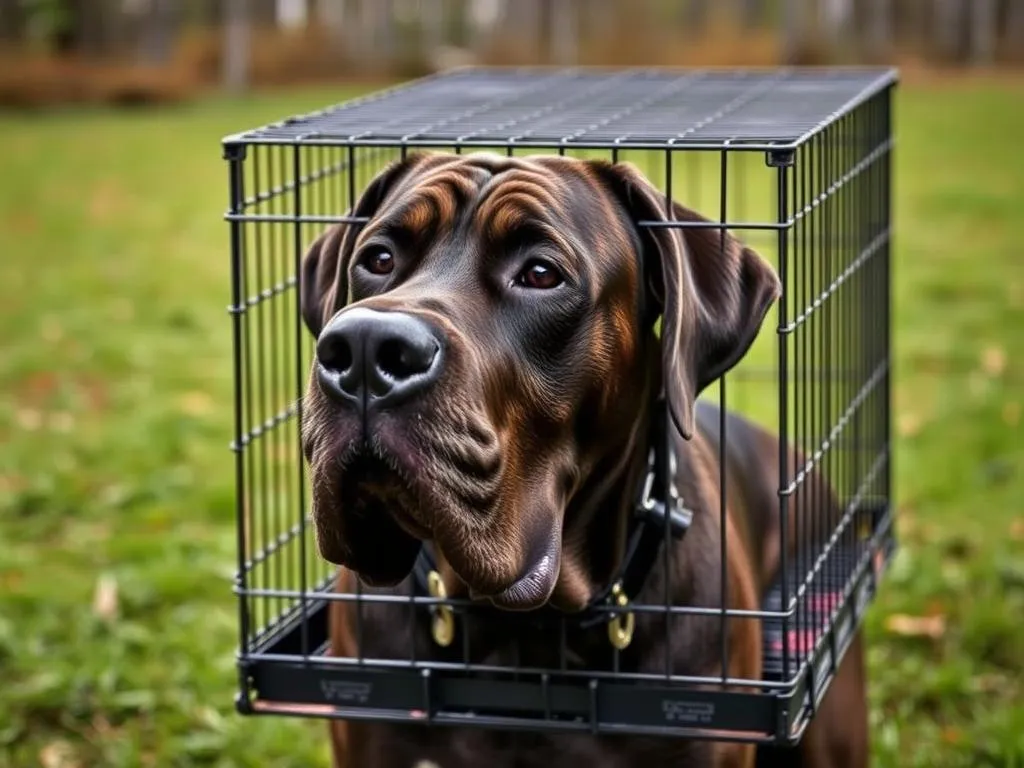
Introduction
Great Danes are often referred to as gentle giants, and for good reason. With their towering stature and affectionate nature, they have a reputation that precedes them. However, owning such a large breed comes with its own set of challenges, particularly when it comes to finding the right equipment for them. One of the most crucial pieces of equipment for any dog owner, especially for Great Dane parents, is a crate. Choosing the right size crate for your Great Dane is not just a matter of comfort; it plays a pivotal role in their safety and well-being.
Crate training is an effective method for ensuring that your Great Dane has a safe space to call their own. It helps in house training, reduces anxiety, and offers a sanctuary during stressful moments. This article will delve deep into understanding Great Danes, the importance of crate training, how to choose the right crate size, and more.
Understanding Great Danes
Breed Characteristics
Great Danes are one of the largest dog breeds in the world, typically weighing between 100 to 175 pounds and standing between 28 to 34 inches tall at the shoulder. Their imposing size makes them a standout breed, but it also means that they require special considerations in their care and living arrangements. Despite their size, Great Danes are known for their friendly and easygoing temperament. They are often affectionate, loyal, and good with children, making them excellent family pets.
Common Needs and Care
Caring for a Great Dane involves more than just feeding and grooming. They require significant exercise—ideally, at least 30 minutes to 2 hours of physical activity each day. Due to their size, it’s essential to provide ample space for them to move around comfortably in your home. A cramped living environment can lead to behavioral issues, so ensuring that your Great Dane has enough room to roam is vital.
Importance of Crate Training
Benefits of Crate Training
Crate training is often misunderstood, but it offers numerous benefits for both dogs and their owners. For a Great Dane, a crate can provide a sense of safety and security. It becomes a personal space where they can retreat when feeling overwhelmed or anxious. Additionally, crate training aids in house training, as dogs naturally avoid soiling their sleeping area.
The Role of Crates in Daily Life
Crates are not just for training; they serve a practical purpose in daily life. Whether you’re traveling or simply need to keep your dog secure when guests arrive, a crate can be a lifesaver. Furthermore, if your Great Dane experiences anxiety, having a designated crate can help them manage their stress levels.
Choosing the Right Crate Size for a Great Dane
Measuring Your Great Dane
To determine what size crate a Great Dane needs, accurate measurements are essential. Measure your dog’s height from the top of their head to the ground while standing straight. For length, measure from the tip of the nose to the base of the tail. If your dog is still a puppy, consider measuring them at various stages to gauge their growth.
Ideal Crate Dimensions
For adult Great Danes, a crate should ideally be at least 42 to 48 inches long and 30 to 36 inches wide. This allows enough room for them to stand up, turn around, and lie down comfortably. For puppies, consider a crate that can expand as they grow or a smaller crate that can be replaced as they reach adulthood.
Types of Crates
When selecting a crate, you will find several options available:
-
Wire Crates: These are popular due to their durability and ventilation. They come in various sizes and are easy to clean.
-
Plastic Crates: Often used for travel, plastic crates provide a more enclosed environment, which can be comforting for some dogs.
-
Soft-sided Crates: While lightweight and portable, these may not be suitable for all Great Danes, especially if they are chewers or scratchers.
Each type of crate has its pros and cons, and choosing the right one will depend on your Great Dane’s behavior and your lifestyle.
Factors to Consider When Selecting a Crate
Growth Considerations
Planning for a growing Great Dane is essential. If you choose a crate that is too small, it can lead to discomfort and anxiety. Opting for an adjustable or expandable crate can be a practical solution, allowing you to adapt it as your puppy grows.
Crate Location in the Home
The location of the crate is just as important as its size. Ideally, it should be placed in a quiet but accessible area of your home, away from direct sunlight and drafts. This ensures that your Great Dane feels comfortable and secure in their crate.
Crate Accessories
To make the crate a cozy haven, consider adding soft bedding and maybe a favorite toy. This helps create a personal space that your Great Dane will enjoy retreating to.
Setting Up the Crate
Introducing the Crate to Your Great Dane
Introducing a crate to your Great Dane should be a positive experience. Start by allowing them to explore the crate with the door open. Use treats and praise to create a positive association. This initial introduction can help reduce any fears they may have about being confined.
Crate Training Techniques
Gradual acclimatization is key to successful crate training. Start with short periods of time in the crate, gradually increasing the duration as your Great Dane becomes more comfortable. Establishing a consistent training schedule can also aid in the process.
Troubleshooting Common Crate Issues
Separation Anxiety
Separation anxiety can be a significant issue for Great Danes. Signs may include excessive barking, pacing, or destructive behavior. To alleviate anxiety, consider leaving them with a favorite blanket or toy and gradually increasing the time they spend in the crate.
Barking and Restlessness
If your Great Dane is barking or restless in the crate, it may be due to boredom or discomfort. Ensure they have enough exercise before being crated and provide mentally stimulating toys to keep them occupied.
Maintenance and Care of the Crate
Cleaning and Hygiene
Regular cleaning of the crate is necessary to maintain hygiene. Use a mild detergent and water to clean removable bedding and wipe down the crate itself to keep it sanitary for your Great Dane.
Inspecting for Damage
Regularly inspect the crate for any signs of wear and tear. If you notice any damage, it may be time to replace the crate to ensure your Great Dane’s safety.
Conclusion
Selecting the right size crate for your Great Dane is crucial for their comfort, safety, and overall well-being. Crate training not only aids in house training but also provides a secure space for your furry friend. By taking the time to understand your Great Dane’s needs and choosing the right crate, you set the foundation for a happy and healthy life together. Investing effort in crate training will ultimately pay off, creating a harmonious environment for both you and your Great Dane.








